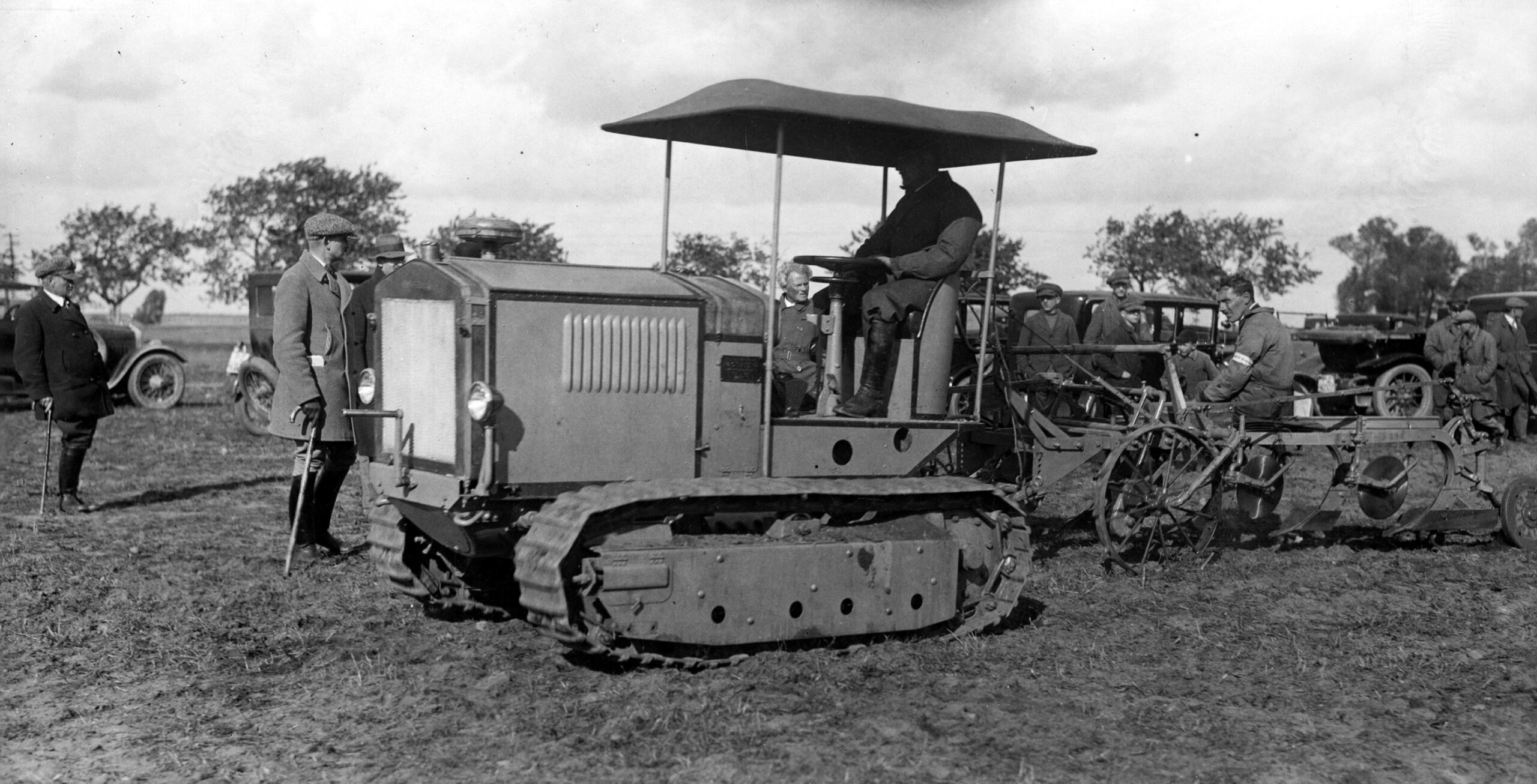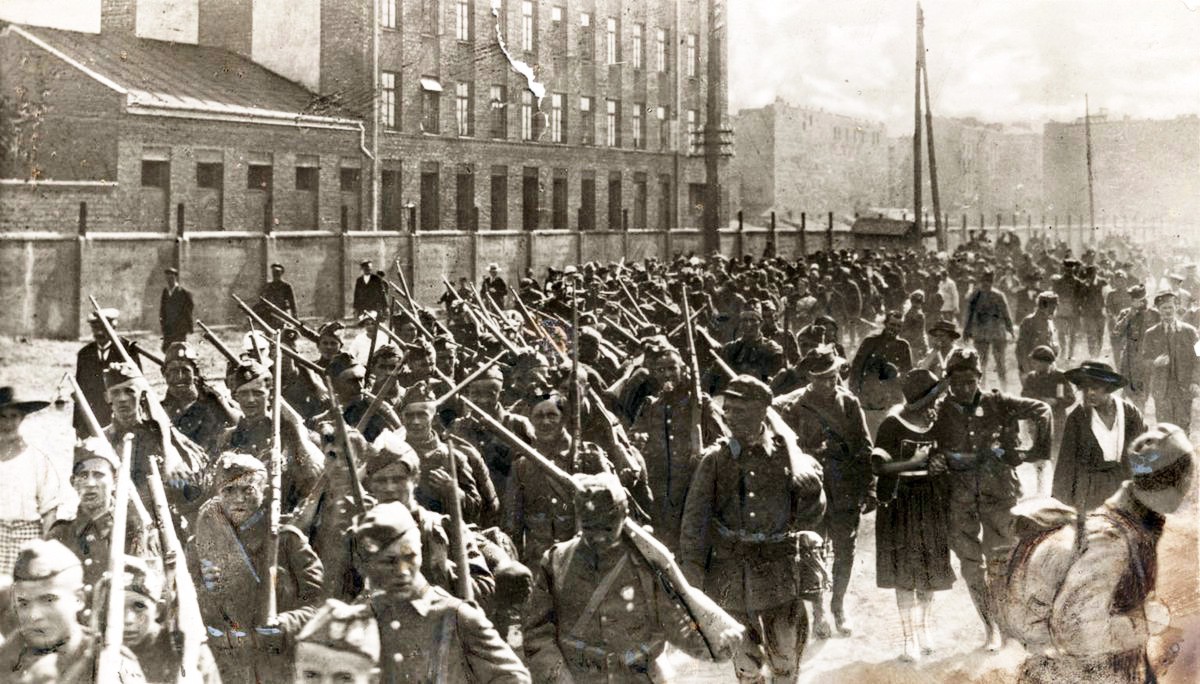The European colonial race that began at the end of the 15th and the beginning of the 16th centuries also brought about a lasting economic division in Europe. In Western Europe, the decline of feudalism began. Peasants obtained their freedom, selling what they produced from their farms, and what they obtained they spent with merchants and artisans. Additionally, more and more people started working outside of agriculture.
by Andrzej Zawistowski
The roots of backwardness
At the same time, Eastern Europe experienced the reverse process. The increased demand for food in Western Europe (mainly for grain) resulted in the massive development of farms owned by the nobility [in the east]. The grain produced there was shipped to the Baltic Sea, and from there to Western European ports. As a result, the landlords expanded their estates, often at the expense of their peasants. The latter were completely dependent on their lords. [With the social rank of serfs], these peasants were required to work in farms owned by the nobility. They were also deprived of their personal freedom and could not leave their village to look for employment elsewhere. On the small allotment of farmland belonging to them, they were able to produce food primarily for their family. Able to sell only a small part of their own production, they could only spend the money they earned in mills or taverns owned by the nobility. This meant that the peasants lacked the funds to spend at merchants or craftsmen, which, in turn, had a negative impact on the pace of development of the entire economy.

Social, political and economic changes, although delayed, did also reach Eastern Europe. In the 19th century, peasants began to be granted the right to personal freedom and the right to own cultivated land. From that moment on, serfdom was done and, with a delay of several hundred years in relation to Western Europe, feudalism in Eastern Europe finally ended. But as a consequence of this delay, Eastern Europe as a whole inherited huge inequalities. Peasants were left with small farms that were able to sustain their families but little more. Often too many people lived on a farm that could not support their needs. However, they had nowhere else to look for employment. Therefore, only a small part of the food produced on such a farm went to the market, leaving the peasants with very little profit.
This meant that the village lacked any support for nascent industry. Therefore, it could not be expected that it would develop economically and employ those who wanted to leave the farm. Nor that they would be able to buy food in stores, enabling traders and farmers to earn more money. It was a vicious circle.
Meanwhile, after the liquidation of serfdom, landowners were left with enormous tracts of undeveloped land on their former estates. Some of them could not cope without the free labor that former serfs had provided. Others, trying to create modern agricultural enterprises, were painfully affected by the small market in cities. Thus, voices began to sound louder and louder that it was the state that should regulate historical inequalities. They called upon the state to reduce the largest farms and enlarge the smallest at their expense. This was called “land reform”. However, this also meant a legal decision that would violate one of the fundamental pillars of the contemporary world – the sacred right to property.
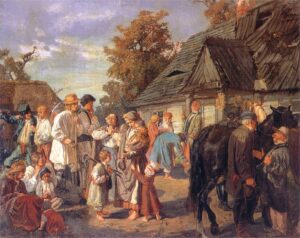
Reform, but how?
The situation was difficult and it soon became even more difficult. The First World War plowed through Central Europe, leaving it with completely new divisions, and where there were once multinational monarchies, smaller nation-states emerged. A completely new framework was imposed on borders with centuries-old roots. In many new states it turned out that political power belonged to the representatives of the peasants and the owners of large estates were the representatives of completely different nations – most often those in power until 1918.
This was the case, for example, in Czechoslovakia. In the Czech lands, large land estates belonged to the Germans and in Slovakia to the Hungarians. The latter also dominated the lands that ended up in Romania. Poles had a strong position among the great landowners in Lithuania and partly in Latvia, Germany – also in Latvia and Estonia. Overall, this [multi-national] situation facilitated quick decisions – it was possible not only to change the structure of land ownership, but also to get rid of alleged or real political opponents all at once. So it was done. The land was taken from the previous owners and divided among its citizens. Sometimes the former owners received a little compensation, in other cases they lost everything. Often they were left with only farm buildings, palaces and castles. Although, these properties proved difficult to maintain once the land that supported them ceased to exist.
Against this background in 1918, the issue of land reform in the reborn Polish state looked a bit different. The enormous inequalities mentioned above had a negative impact on the development of the economy. However, the great majority of landowners in the new state were Poles. Any interference with the right to property would therefore affect Polish citizens as well. Personages who were often meritorious in the fight for the newly regained independence. On the other hand, this independence would not be possible without the involvement of a huge mass of peasants in the struggle, among whom it was possible to awaken a sense of national belonging. They obviously expected this to be appreciated; they hoped that a solution would be found to their most pressing problem. It was time to decide.
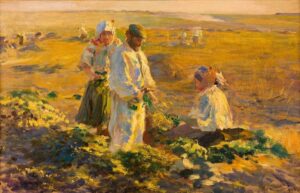
Founded in 1918, Poland was an agricultural country: 65.6% of the inhabitants of the Second Polish Republic lived off agriculture, but only 52% were in the hands of peasants. 65% of farms had an acreage not exceeding 5 ha. The estates of landowners, churches, states and local governments occupied large areas. The urgent land reform was already included in the manifesto of the Provisional People’s Government of the Polish Republic, which was created at the beginning of November 1918 under the presidency of Ignacy Daszyński. Over the next months, various political forces presented their own demands on this matter. The Left demanded a radical reform: the parcelling of land owned by the state and churches, the nationalization of forests and the determination of the upper limit of the area of farms. The right, whose political base encompassed large landowners, proposed only the parcelling of state goods belonging to foreigners, those obtained from invaders, and poorly managed estates. There was a particular fear of a general parcelling in the eastern territories of the Republic of Poland. There the local landowners were Poles and the peasants were most often Belarusians or Ukrainians. Thus, in this case an agricultural reform would weaken the Polish and strengthen national minorities.
Reforms in the Second Polish Republic
The lack of political agreement led to a somewhat strange decision. In July 1919, the Sejm adopted a resolution. A farm with an area of 25 ha was adopted as the target size for farms. Estates with an area of over 60-180 ha (depending on the territory), and in exceptional cases – 400 ha, were to be parceled out. The land was to go to smallholders and landless peasants. The parcelling was to avoid specialized farms – e.g. fish, breeding or seed farms. Badly managed properties and those acquired through war usury were to be completely taken away. The reform was to be implemented gradually, and those who were to lose property were to receive compensation. However, it is worth emphasizing: it was not done as a legal act, but rather only through a resolution showing the political position of the deputies. The situation was therefore not resolved and the problem remained.
The late payment bill had to be paid very quickly. When the Red Army invaded Poland in 1920, one of its main aims was to take land from the great owners and give it over to the peasants. The operation was not explained, it was only about gaining the support of the village. It was up to the peasants to decide which side would emerge victorious from this war. The Polish authorities were also aware of this. That is why, in an express procedure, what had been delayed for a year was carried out by parliament: the law on land reform was passed. In fact, it repeated the solutions mentioned in the resolution of 1919. The owners of the parceled estates could count on compensation in the amount of 50% of lost land. These were the highest claims of this type in Europe at that time. The land was to go to landless peasants and smallholders, and in the first place to soldiers. In the following years, the new owners were to pay off the allocation in small installments. Land was not available to those convicted of treason, deserters and people who took part in the wild division of the land under the protection of the Red Army. The land reform was supplemented by the law on military settlement passed a few months later. Soldiers departing the army were given state land in the eastern provinces of the Second Polish Republic – that is, where the national minority prevailed in the villages. In this way, they wanted to strengthen state influence in these areas and placate the right wing.
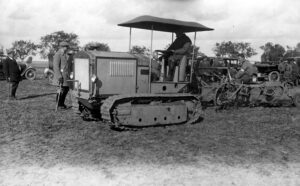
It seemed that one of the most important political and economic issues had been resolved, but then another problem arose. In March 1921, an extremely democratic constitution was adopted. It not only ensured broad civil rights, but also protected private property. In its view, the act of taking away land from owners for incomplete compensation was illegal. So the problem of land reform returned and became one of the main arguments in the political struggle.
As a result of numerous disputes and political compromise, at the end of December 1925 another act on land reform was finally passed. It was the work of the government led by Władysław Grabski,who had previously arranged the Polish finances. Political turmoil had caused the government to collapse more than a month earlier, but its latest work gained political support. According to the new act, estates larger than 60 ha were to be parceled – although, depending on the region, this limit was raised to 300 or even 700 ha. It was assumed that a minimum of 200,000 ha would be parceled annually, and first of all those properties, the owners of which notified their readiness to do so. It was meant to be a full compensation. The peasants receiving the land were to pay it back in installments. In this way, the land reform was carried out until 1939. It was not a success – there was a shortage of people willing to parcel land. Not because the peasants did not need it, but because they could not afford it. The political bomb still wasn’t disarmed, but there were not enough brave people to start working on it.
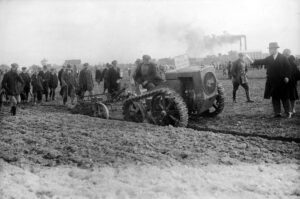
Reforms introduced by the communists
During the Second World War, the topic of land reform returned. The Polish government-in-exile announced that after the end of the occupation, the problem would be finally resolved. However, also this time – as in 1920 – they neglected it which was to bring colossal losses. In 1944, the communists used land reform as a tool to buy the support of Poles – most of them still lived in the countryside. A quick implementation of the land reform was announced by the manifesto announced on 22 July 1944 by the Polish Committee of National Liberation – the Polish quasi-government established by the Soviets.
The announcement was implemented very quickly – already in September 1944 – and in an extremely radical version. In the light of the then regulations, it was an unlawful act. The Polish Committee of National Liberation and the National Council that issued the decree on the reform was created in a legal vacuum. The legitimate power – both under domestic and international law – was in the hands of the Polish government-in-exile in London. Despite this, the decision to reform was implemented. The land that belonged to the Germans (regardless of their nationality), traitors and collaborators was completely taken away. Polish estates, the area of which exceeded 50 ha or 100 ha (in the former western regions) were also to be parcelled. The lower limit of the parcels was not known – which meant that all properties exceeding the indicated limit were collected. The previous owners lost everything, including family houses and their equipment. Moreover, they could not settle in the same district where their former property was. They were only offered a small pension as compensation. The peasants had to pay a small price for the land they received, in addition, it was spread over many years of installments. In December 1944, most of the forests were nationalized.
In the fall of 1944, “parcelling brigades” began their operation. The previous owners were thrown out of the houses. Documents of granting new owners were handed out in the light of flashlights. Those who wanted to counteract lawlessness were threatened with the death penalty. In the following months, almost all of the properties located in the former German lands were taken over. Military settlement was also organized in these areas – almost on the same terms as in 1920, it was done in the east.
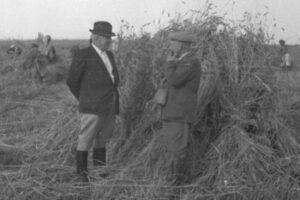
The economic effects of the land reform, however, were limited. The parceled land went to 1.1 million families, but this did not improve the overall economic situation. The largest farms existed in the Borderlands, occupied by the Soviets in 1944. In the areas remaining in Poland, the possibilities of dividing the land were much smaller. Commercial farms that produced for the market were destroyed, while small peasant farms were insufficiently strengthened. Those less than 5 ha still constituted the majority of Polish farms.
However, through a radical move the communists got rid of the group that was completely against them – the Polish landowners. The mansions and palaces that were the backbone of the underground disappeared. Some of them were turned into museums, schools and libraries. Others, left to their fate, were plundered and destroyed. In 1945, the Polish landed gentry definitively ceased to exist. The bill for omissions from the times of the Second Polish Republic turned out to be very high.
Author: Dr hab. Andrzej Zawistowski – Professor at the Warsaw School of Economics, employee of the Pilecki Institute.
Translation: Mikołaj Sekrecki

